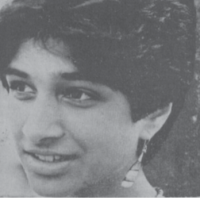By Anas Abbas | DAWN.COM
If nothing else we Pakistani agree on one thing. Whatever little hope there appears is the last hope. A recent example of this was the invention of water as fuel for cars, which soon came crashing down. When we are too desperate for hope that is what happens. We believe it even if all evidence goes against it. But desperation is such a state that never lets a people learn. They bow down to miracles of crackpots just so that things change without their having to invest in knowledge and scientific progress.
Lately Pakistani urban youth has obsessed with another “Last Hope” who is an ideological lapdog of Hamid Gul and Jamaat-e-Islami whose looks and past athletic achievements are inversely proportional to his current ideology.
As readers might have guessed correctly, yes, its Imran Khan, the ‘playboy cricketer’-turned-politicianwho once threatened to abduct the greatest Pakistani humanitarian, Abdul Sattar Edhi and whose supporters are anxiously awaiting his triumph in upcoming polls. The demoralised and despondent youth that forms the major chunk of Pakistani population explosion feels abandoned by their government and seeks Khan as the solution to their insurmountable issues. Thanks to the gullibility of these overseas and domestic followers, Khan has earned the status of a Messiah who is expected to transform Pakistan to the ‘Norway of Europe’ in a short span of time by rooting outcorruption in 19 days, containing and eradicating terrorism in 90 days and becoming theSaudi Arabia of coal in, again 9-something days. These ludicrous claims of Khan and his party PTI have mammoth selling price at home but in reality they seem idealistic, incredulous and mostly fallacious in nature.
Take for instance, his stance on the issue of terrorism: he holds the ongoing War on Terror (started on 7th October 2001) responsible for not only the mounting polarization, extremism and terrorism in Pakistani society but also for the inception of Pakistani Taliban (TTP).
Recently his comments of Taliban fighting a jihad in Afghanistan faced severe criticism from not only the Afghan government but also from the Afghan public who protested against his comments.
Of course Khan and his brigade of trolls branded all criticism as ‘International Conspiracy’ and Khanfurther defended his comments by proposing myths that Bin Laden and Gulbuddin Hekmatyar were trained and indoctrinated by the CIA in 1980s.
However there are some pertinent questions which must be answered in order to ascertain whether or not there is any substance to Khan’s claims. The questions are:
Is the Taliban fighting a ‘Holy War’ in Afghanistan for the freedom and rights of afghan people as claimed by khan?
Is War on Terror the root-cause for the menace Pakistan has faced in the last decade?

In the above screenshot (Video courtesy Youtube, banned in Pakistan) Imran Khan addresses a gathering at Dar-ul-Uloom Haqqania which was the breeding ground for the Taliban leadership and was well known for its support of Bin Laden. See also Haroon Rashid BBC Report: “The University Of Holy War”.
Even a cursory examination of history can tell us that the Taliban had nothing to do with Afghanistan and were the product of Pakistani JUI-run religious schools for Afghan refugees. Ahmed Rashid, a world renowned expert on Taliban provides a great insight on their emergence in his book “Taliban” (published in 2000). He describes the significant role of Maulana Samiul Haq andColonel Imam in the emergence of Taliban. Haq is a Pakistani religious and political leader whose madrassaDar-ul-Uloom Haqqania became a major training ground for the Taliban leadership.

Protesters led by Maulana Samiul Haq chanting slogans in support of Bin Laden. Picture courtesy: Khyber Gateway
In February 1999 Haq gave an interview to Rashid in which it was revealed that he was directly managing Taliban leader Mullah Omar in forcefully implementing puritanical brand of Sharia. He was also the chief organizer for recruiting Pakistani students to fight for the Taliban against the Northern Alliance and whenever the Taliban required reinforcements, Haq, along with the ISI provided them with the essential manpower.
The chart below shows the contribution of Pakistani and Al Qaeda militants in Afghan Taliban military force:

Graph below gives an estimation of Pakistan’s (Central Board of Revenue): The Economic loss suffered by Pakistan due to Taliban’s illegal transit trade & nexus with Pakistani transport, trade and drug mafia:

In his book Fundamentalism Reborn? Professor William Maley writes “Many Taliban carry Pakistani identity cards, as they spent years in refugee camps in Pakistan, and thousands voted in the 1997 elections in Balochistan for their favorite Pakistani party – the Jamiat-e-Ulema-i-Islam (JUI)”.
Afghans under the Taliban rule suffered some of the worst oppression in human history. It was a period of the Afghan Holocaust that witnessed ethnic cleansing campaigns, massacres, human trafficking, mass starvation and other forms of humanitarian crisis. According to a 55-page report by the United Nations, the Taliban conducted 15 colossal massacres between 1996 and 2001 in order to consolidate their brutal rule in Afghanistan. Shias were branded as “apostates” and there were organised ethnic cleansing campaigns against the Hazara community where women were raped, and thousands of people were either killed or locked in containers and left to suffocate.Women experienced a terrible form of repression where they were banned from education and employment, and were relegated to perpetually living behind the veil.
The savage Taliban, also termed as the “Holy Warriors” by Imran Khan, even closed down hospitals, and not only thwarted the efforts of aid agencies in providing relief to the Afghan people but also refused to cooperate with the UN led polio immunization campaigns for children.
Let’s look at some pictures to get a real feel of life under the Taliban regime, which the Afghans suffered:

Scenes from the Kabul soccer stadium where spectators once enjoyed watching football games now watch in awe and horror as hangings are carried out in public. – Photo courtesy RAWA

Public executions carried out against the Shiite minority in the province of Herat by the Afghan Taliban. – Photo courtesy RAWA

Tortured war prisoners’ bodies are left in the open to rot as the Taliban forbade their burial in Herat. – Photo courtesy RAWA

Paintings by children of RAWA schools and orphanages in Afghanistan depicting the obscurantist Taliban era. – Photo courtesy RAWA

Female passengers had to travel in trunks of cars like animals because the Taliban forbade taxi drivers to pick women without their close male relatives.– Photo courtesy RAWA

A well-known 90 year old poetess, Aunt Saman Boo who had to resign to begging in Herat due to Taliban aggressions. The old woman carries her published book of poetry with her while roaming the streets in search of a few Afghanis or food.– Photo courtesy RAWA

The Taliban regime proved cataclysmic especially for women who were publicly punished, often, by death. According to the Physicians for Human Rights, no other regime has inflicted such repression on half of its population.– Photo courtesy RAWA

Life under the Taliban as Afghanistan underwent the worst drought in its history.– Photo courtesy RAWA

Scenes from the Yakaolang Massacre carried out by the Taliban where relatives are trying to identify their relatives and loved ones.– Photo courtesy RAWA
Taliban phenomenon was not only confined to Afghanistan, even before 9/11 its tentacles had begun gradually spreading over and taking hold of Pakistan. This Talibanization of Pakistan was predicted in the late nineties by Olivier Roy, William Maley, and especially Ahmed Rashid, who documented in his book (Taliban) that by 1998, Pakistani Taliban groups were forcibly imposing their Sharia laws and consequent punishments in FATA as were implemented in Afghanistan. Similar incidents of Talibanization of Pakistan were also documented by senior journalist, Rahimullah Yousufzai in 1998.
As we have seen above that Imran Khan’s “Holy Warriors” are actually savages and beasts who have not only caused mass devastation in Afghanistan but have also become the ideological foothold of Pakistani Taliban (TTP) that has been killing thousands of Pakistanis in recent years. These Taliban were never accepted as legitimate rulers by the Afghan people and from their beginning were considered Pakistan’s proxies.
Imran also expressed great sympathy for these barbaric criminals in his recent book “Pakistan: A Personal History”. In chapters 8 (Pakistan Since 9/11) & 9 (The Tribal Areas: Civil War? My Solution), Khan provides a grossly misleading narrative that the Taliban were willing to handover Bin Laden after 9/11 and that the American invasion of Afghanistan was motivated by “Imperial Hubris”. However the book fails to mention that America was in negotiations with Taliban on the Bin Laden issue since 1996 and had pressurized them to hand over Bin Laden through a series of UN resolutions such as 1076, 1193, 1214,1267, 1333 and 1363. Nevertheless the Taliban defied this pressure as it was never in their interest to hand over Bin Laden since his fighters had played a substantial role along with Pakistani assets in their victory against the Northern Alliance and it was their turn to return the favour to their guests.
Exploring Khan’s claim that Pakistan has been wrong in fighting the American “War on Terror” since it hasonly brought destruction and disgrace to the nation, this seems another bogus assertion of his, based on highly erroneous information.
Between the years 2001 to 2006, Pakistan’s annual GDP growth was at an average of a whopping 7 per cent as compare to the 3 per cent annual growth in 1999 to 2001. This was made possible, not because Musharraf was some Stalwart, a Warren Buffet, or an economic gold medalist like Manmohan Singh,instead the boom was predominantly facilitated by incentives such as removal of all sanctions, debt rescheduling, waiving of export quota restrictions and greater market share that were offered to Pakistan for its participation in the “War on Terror”. Furthermore the relations with India improved significantly due to immense American pressure, due to which, Pakistan curtailed its support for Kashmiri insurgency.
Indeed after 9/11, Pakistan faced an enormous increase in violence which resulted in 40,000 civilian casualties and an economic cost of around $70 billion but an ample proportion of this staggering cost was also attributable to the Balochistan Conflict and ethnic violence in Karachi which had nothing to do with the War on Terror. In any case, the destruction wrecked by TTP was inevitable, even if Pakistan had not participated in the war on terror, as Pakistanis who were assisting the Afghan Taliban had started various movements even before 9/11 within FATA to implement the same rule which later evolved into the ruthless Pakistani Taliban (TTP). The chickens came home to roost for the country when it fought against terrorism and it paid a regrettable price for nurturing Islamic militants and sustaining them. In doing so, Pakistan lost 5,000 of its security forces. A similar cost was paid by the US in the form of 9/11 attacks after it conveniently left Afghanistan in a dilapidated state which later on morphed into a breeding ground for al Qaeda.
By calling Pakistan’s ‘war on terror’ a mistake, elements such as Imran Khan are an affront to the soldiers (such as Major General Faisal Alvi) who have bravely fought against Al Qaeda and laid down their lives. In fact, the correct approach is to slam the peace deals that Pakistan conducted with militants in FATA post 9/11 which were instrumental in giving militants the necessary breathing space that subsequently gave them the required strategic advantage.
One of the main architects of these deals was General Aurakzai, who not only supported the 1999 Musharraf coup but was also condemned by the UN for his pro Taliban views and by thePakistani XI Corps Commanders for his inept military operations. Aurakzai has been widely quoted by Imran Khan who is inspired by him in his defence of peace deals. However, it’s very naïve and illogical to blindly follow the narrative of a slippery character like Aurakzai who drew blame on the US for his own lack of competence in leading military operations.
Khan is an ardent promoter of these peace deals and continues to deceive the public by calling these the solution against terrorism and by linking it to the Northern Ireland peace process. He fails to understand that this process was only made possible after the successful “Decommissioning”where the IRA had to surrender its weapons. One can never expect the Taliban and al Qaeda to adopt“Decommissioning” since their ideology and struggle is religiously motivated unlike the IRA conflict. Currently the US is also striving towards similar agreements with Taliban where the latter are required to abandon their weapons and accept Afghan Constitution.
To sum it up Khan’s views on Taliban and his policy of countering terrorism is based on myths and distorted facts which promotes the conspiracy theory culture. His views remain unchallenged by a majority of the Pakistani Youth and media because they themselves are ignorant of history and are mostly the product of the TV Boom of 2003. He further misguides the public by terming the Pakistani Hazarasectarian cleansing as an international conspiracy and refrains from highlighting the link between these ethnic killings and those carried out in Afghanistan by the Afghan Taliban before 9/11. The latest example of his propagandist attitude is the drama he orchestrated about hisflight from Toronto to New York during which he was questioned. He made an issue that he was harassed and grilled due to his stance on drones only to be later confirmed by officials that the reason was that the donations he collected were illegal on the visa he was travelling.
In the end, Imran is a ‘Taliban Khan’ not because he wants his people to be slaughtered in soccer stadiums, but because he strategically supports Taliban for two main reasons:
a) To remain in the good books of a faction of Military establishment that has always viewed Taliban as a proxy and is leading Pakistan into disaster.
b) To exploit and fuel Anti-Americanism, the best-selling product in Pakistan and which directly results in keeping a deafening silence on Taliban’s terrorism and instead blaming the ‘War on Terror’ for all the ills befalling Pakistan.
This strategy of Imran Khan can be further evidenced in the absurd claim he made of blaming the War on Terror for the murder of Salman Taseer while conveniently ignoring the murders of thosesuch as Justice Arif Iqbal Bhatti, who have been killed like Salman long before 9/11, only because they defended blasphemy victims.
If Imran Khan really is as daring as he purports to be, he should openly confront and condemn the Taliban leadership by name, which he does not have the courage to do. He should learn a lesson from Malala who defied the Taliban’s ban on education of women.
References:
Roy, Olivier, ‘Domestic and Regional Implications of the Taliban regime in Afghanistan’, 24 April 1999.
Syed Saleem Shahzad 2011, Inside Al-Qaeda and the Taliban: Beyond Bin Laden and 9/11.
Pakistan: A Personal History by Imran Khan
Roy, Olivier, Middle East Report, Winter 1997.
Yousufzai, Rahimullah, ‘Pakistani Taliban at work’, the News, 18 December 1998.
Ahmed Rashid: Descent into Chaos 2008
Ahmed Rashid: Taliban, Militant Islam, Oil and Fundamentalism in Central Asia
http://www.rawa.org/murder-w.htm
http://www.dailytimes.com.pk/default.asp?page=2011%5C11%5C12%5Cstory_12-11-2011_pg3_4
http://en.wikipedia.org/w/index.php?title=File:Pakistan_gdp_growth_rate.svg&page=1
http://www.dailytimes.com.pk/default.asp?page=2011%5C11%5C12%5Cstory_12-11-2011_pg3_4
The writer is an investigative Counter Terrorism Analyst. He blogs at aacounterterror.wordpress.com and tweets at @Anas_Abbas1.





























